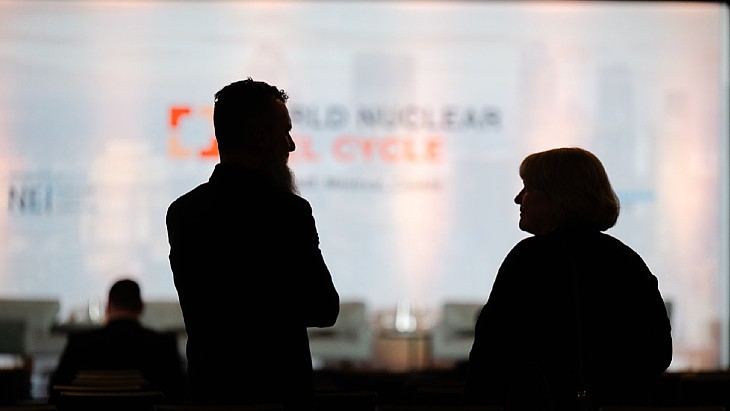Progress with Indonesian SMR project
 Indonesia's National Atomic Energy Agency has launched a roadmap for developing a detailed engineering design for its Experimental Power Reactor. The design of the country's indigenous small modular reactor is expected to be finalised later this year.
Indonesia's National Atomic Energy Agency has launched a roadmap for developing a detailed engineering design for its Experimental Power Reactor. The design of the country's indigenous small modular reactor is expected to be finalised later this year.Indonesia's National Atomic Energy Agency (Batan) has launched a roadmap for developing a detailed engineering design for its Experimental Power Reactor (Reaktor Daya Eksperimental, RDE). The design of the country's indigenous small modular reactor is expected to be finalised later this year.
.jpg) |
| The design concept for an RDE plant (Image: Batan) |
The detailed engineering design roadmap - part of Batan's RDE pre-project phase - was announced on 7 March by Geni Rina Sunaryo, Batan's director of nuclear reactor safety and technology. The roadmap is a continuation of the RDE basic engineering design, which was completed in 2017.
Batan said the detailed engineering design document, together with the safety analysis report, will be an important requirement for it to achieve approval for the RDE design from the Indonesia's Nuclear Energy Regulatory Agency (Bapeten).
Batan said it aims to complete the RDE detailed engineering design this year by involving a consortium of Indonesian universities and private companies. It plans to have the first draft of the detailed engineering design ready for review in June by an expert mission from the International Atomic Energy Agency (IAEA). It will follow up recommendations from that review by September. The Indonesian government aims to announce the design to the global community during this year's IAEA General Conference, Batan said.
"The detailed design means that the design is close to construction, and the ultimate goal is to determine how much the RDE will cost," Sunaryo said.
Batan launched a plan in 2014 to build an 10 MWt RDE at its largest research centre site - the Puspiptek Complex, in Serpong, South Tangerang, Banten - as a first strategic milestone for the introduction of large-scale nuclear power plant fleets into the country. The RDE is a very small sized pebble-bed high temperature gas-cooled reactor (HTGR) with low enriched uranium oxide TRISO fuel.
The main objective of the plan is to demonstrate Indonesia's ability to build and safely operate nuclear power stations to meet the needs of the country's society and economy. Batan intends the design and technology of the reactor to be suitable for subsequent commercial use by utilities and independent power producers around the country, as well as for export.
Batan began the pre-project phase in 2015 in cooperation with Russian-Indonesian consortium RENUKO as consultant for conceptual design. The RENUKO consortium includes Indonesian companies Rekayasa Engineering and Kogas Driyap Consultant, as well as Germany's NUKEM Technologies GmbH and subsidiaries of Russian state nuclear corporation Rosatom.
Last year, Batan received a siting licence from Bapeten for the demonstration RDE reactor at its Serpong complex.
Batan will also begin construction later this year of a system test facility that will demonstrate Indonesia's ability to design and build a portion of the RDE itself. The test results from the facility will be used as input data in the RDE's design.
Batan is promoting the introduction of nuclear power plants in Indonesia to help meet the county's demand for power. It envisages the start-up of conventional large light-water reactors on the populous islands of Bali, Java, Madura and Sumatra from 2027 onwards. In addition, it is planning for the deployment of small HTGRs (up to 100 MWe) on Kalimantan, Sulawesi and other islands to supply power and heat for industrial use.
Researched and written
by World Nuclear News
_92619.jpg)

_84504.jpg)







_50521.jpg)

